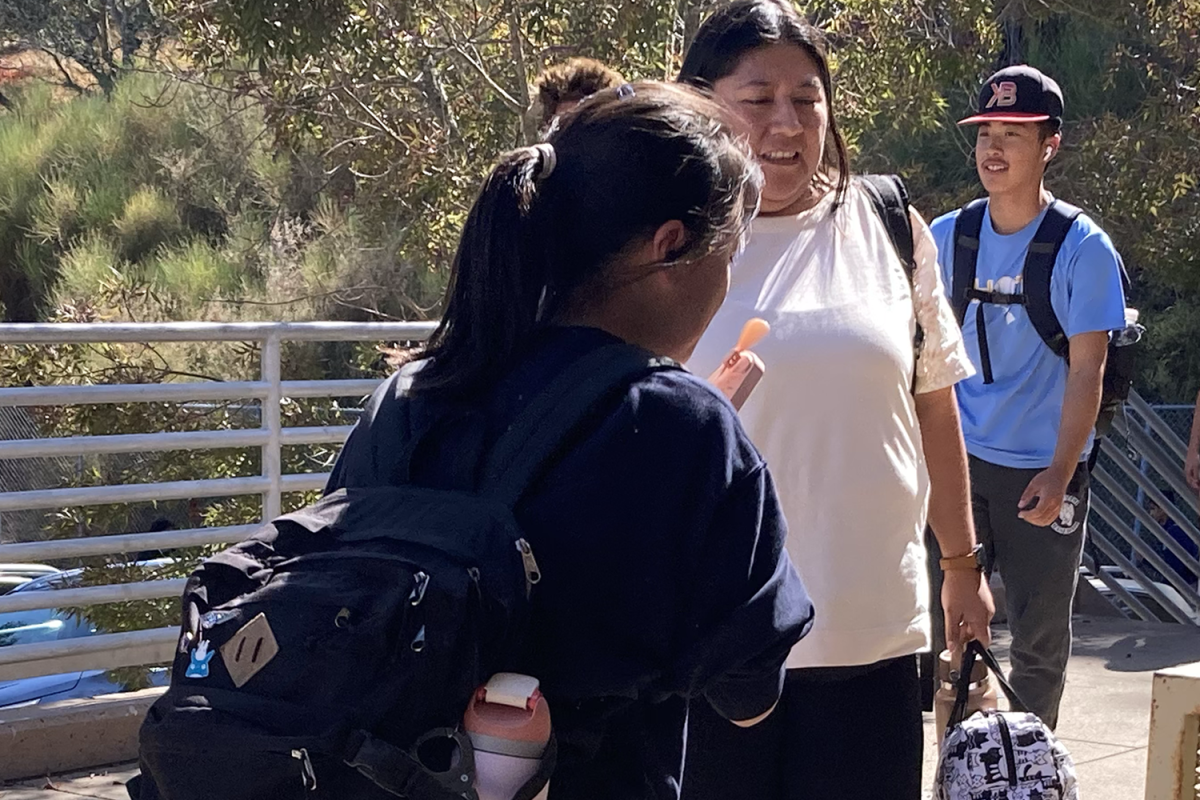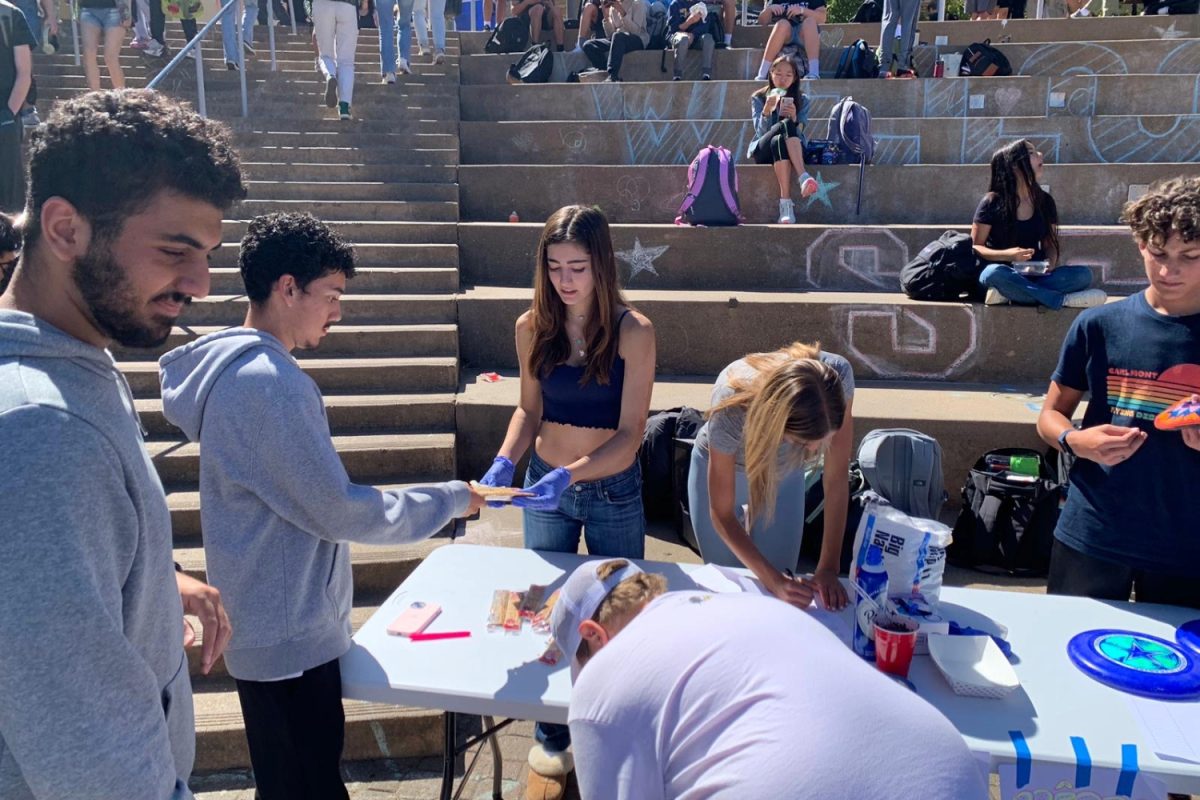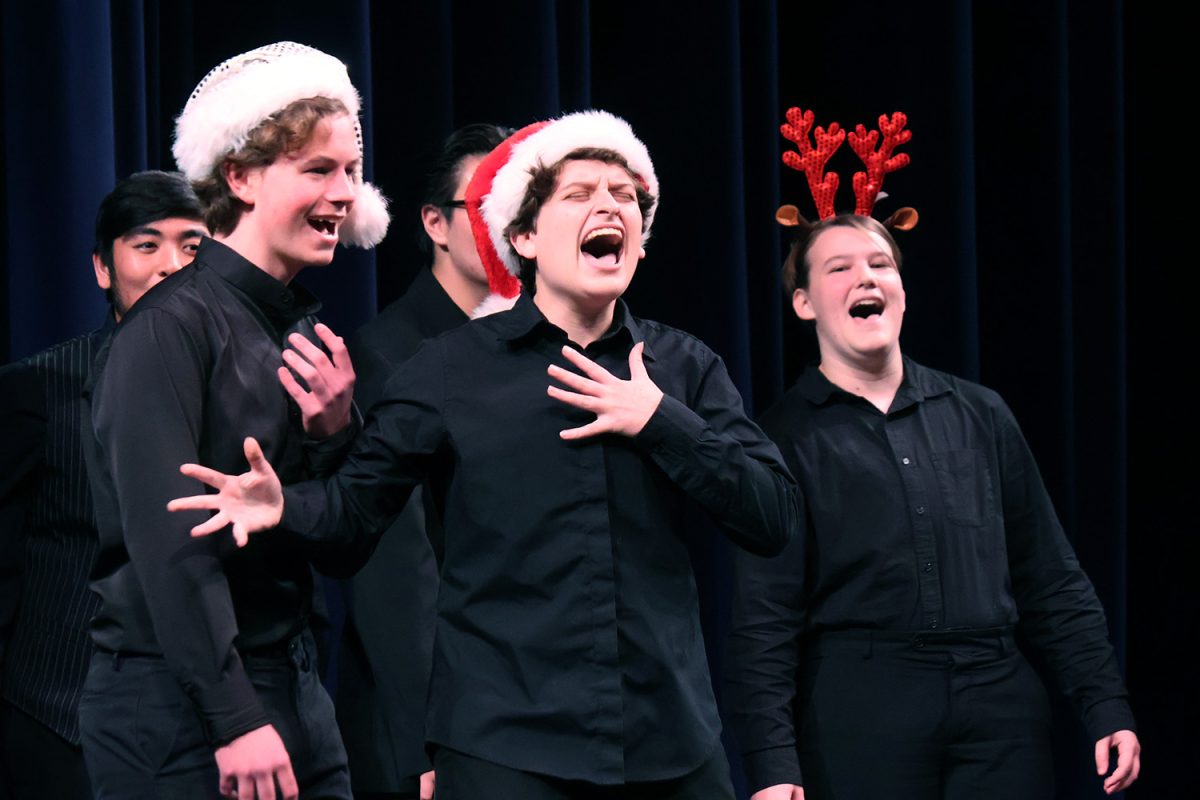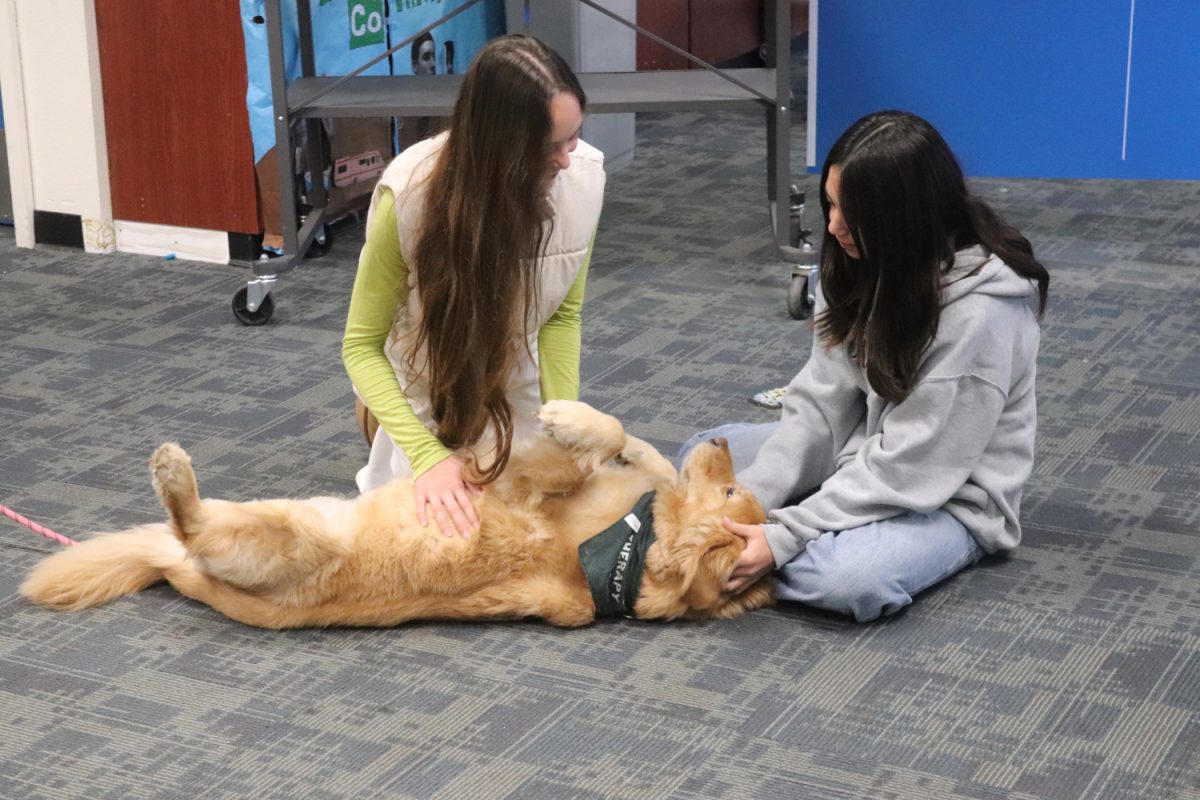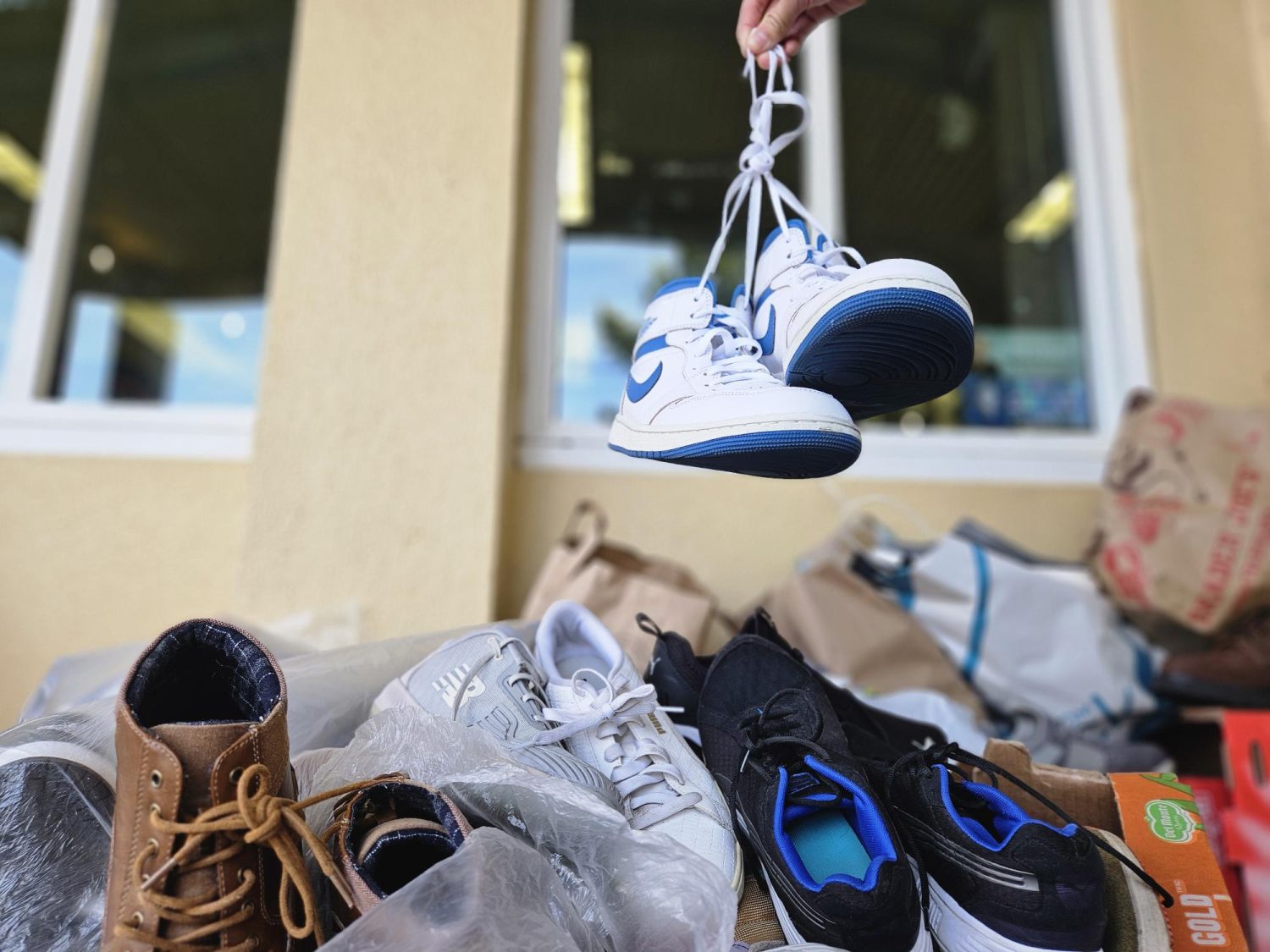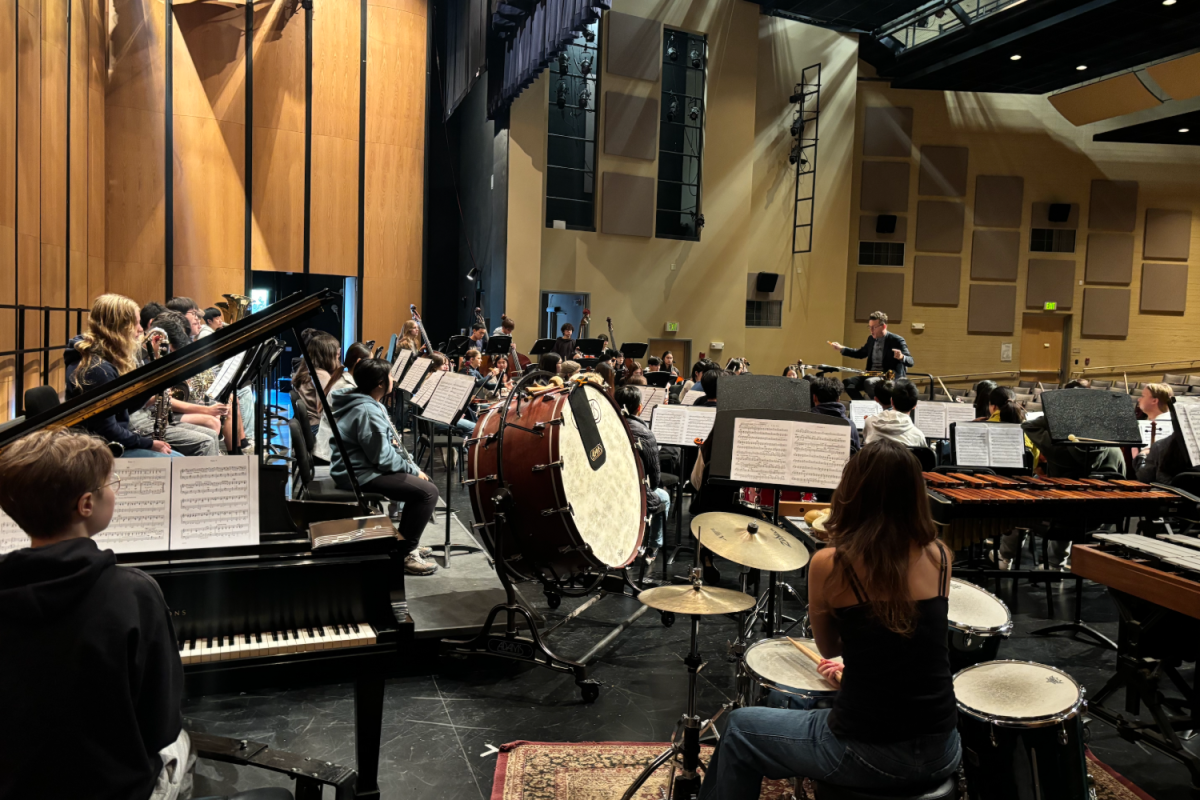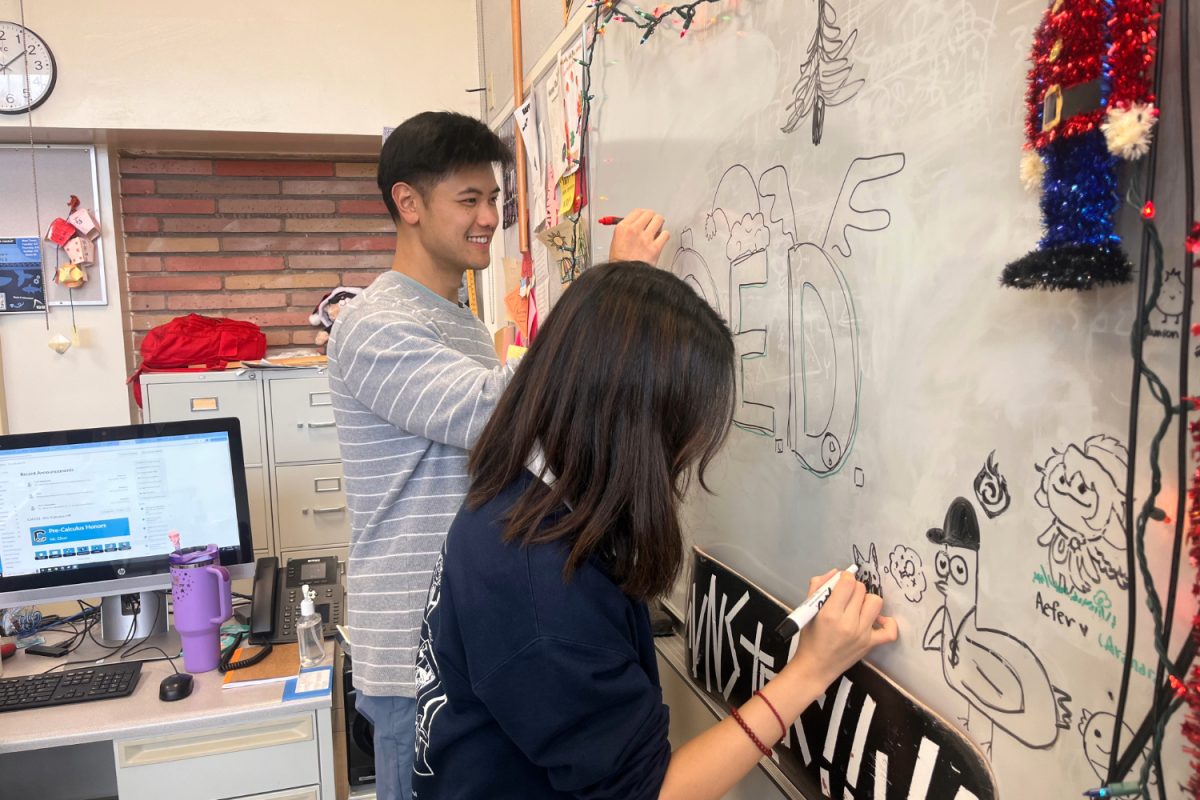Students at Carlmont hide in the shade with fans and bottles of water as temperatures soar during the first week of October.
The heat ranged from mid-80 degrees Fahrenheit to low 90 degrees Fahrenheit, which caused many students to have headaches and feel fatigued.
Anila Ray, a varsity girls tennis player, said she and her teammates suffered from headaches and sluggishness during practice throughout the week.
“A lot of people have to sit out for a second in the shade, and the coaches understand that it’s because we need a break,” Ray said.
High temperatures can cause dizziness and headaches if the body loses too much water compared to what it’s drinking.
In other cases, extreme heat can make the body more tired. People who begin the day tired may struggle with everyday tasks because they’re already short on energy.
Ray also said fatigue significantly impacted her classes at school, and her history class even switched rooms to one with more air conditioning to keep students cool.
“It’s very annoying because if I’m already running low on sleep, I go into class on those days and feel like I cannot focus,” Ray said.
During heat waves, these headaches bring students to the health office on campus. Some come in vomiting, fainting, or even passing out, according to Erika Quintana, Carlmont’s health aide.
Quintana also said students tend to stay less hydrated due to acclimation to cooler weather.
“It affects them in that they don’t drink enough water, and then they get a lot of headaches,” Quintana said.
Pamela Ruiz, a teacher in the math department, said that she noticed students tend to get bored more easily and struggle to focus.
“You can see that the students aren’t as engaged, that they’re not paying attention as much,” Ruiz said.
She added that she tends to let the class run a bit slower to combat students’ fatigue during heat waves and give them more time to process.
“I like giving students a couple of short breaks or time to discuss questions with their peers,” Ruiz said. “That way, students can take the time to understand the material or refocus their attention.”
When asked how to help stay cool, Ray said to take things easier, drink water, and stick to more shaded areas on campus.
According to Quintana, staying hydrated is the most effective way to keep the body at cooler temperatures.
“It’s not just water; Gatorade, Powerade, Body Armor, something with electrolytes,” Quintana said. “They also need to get a lot of rest.”

